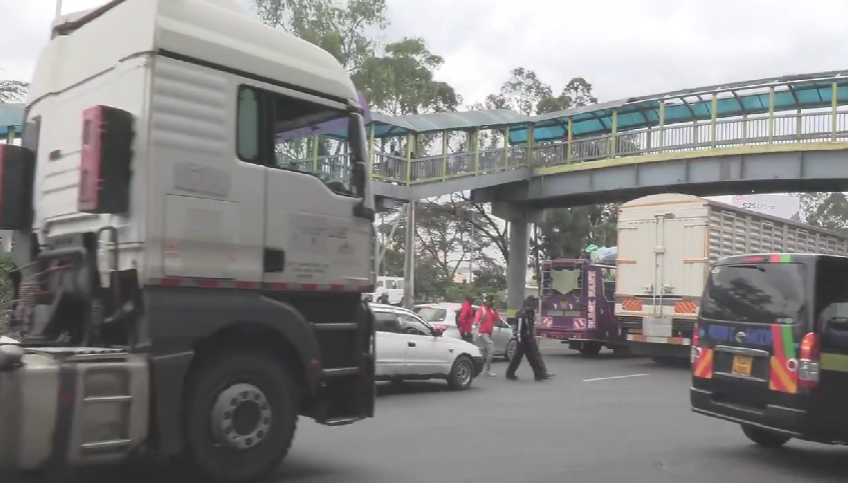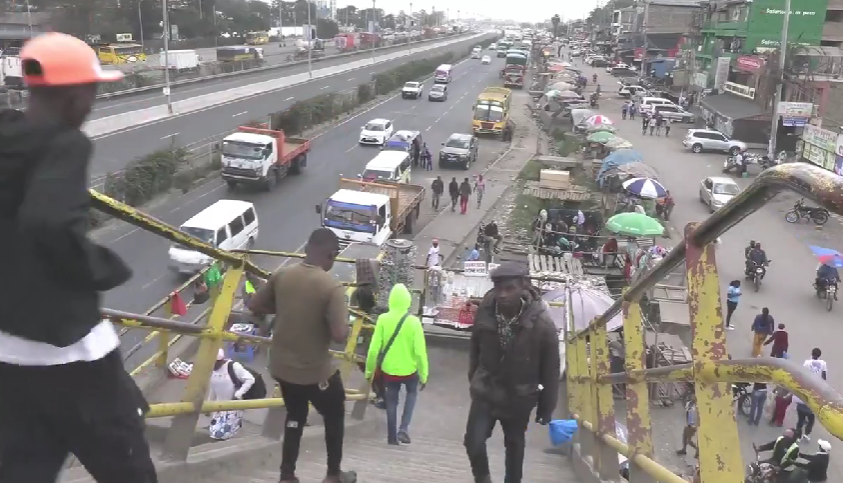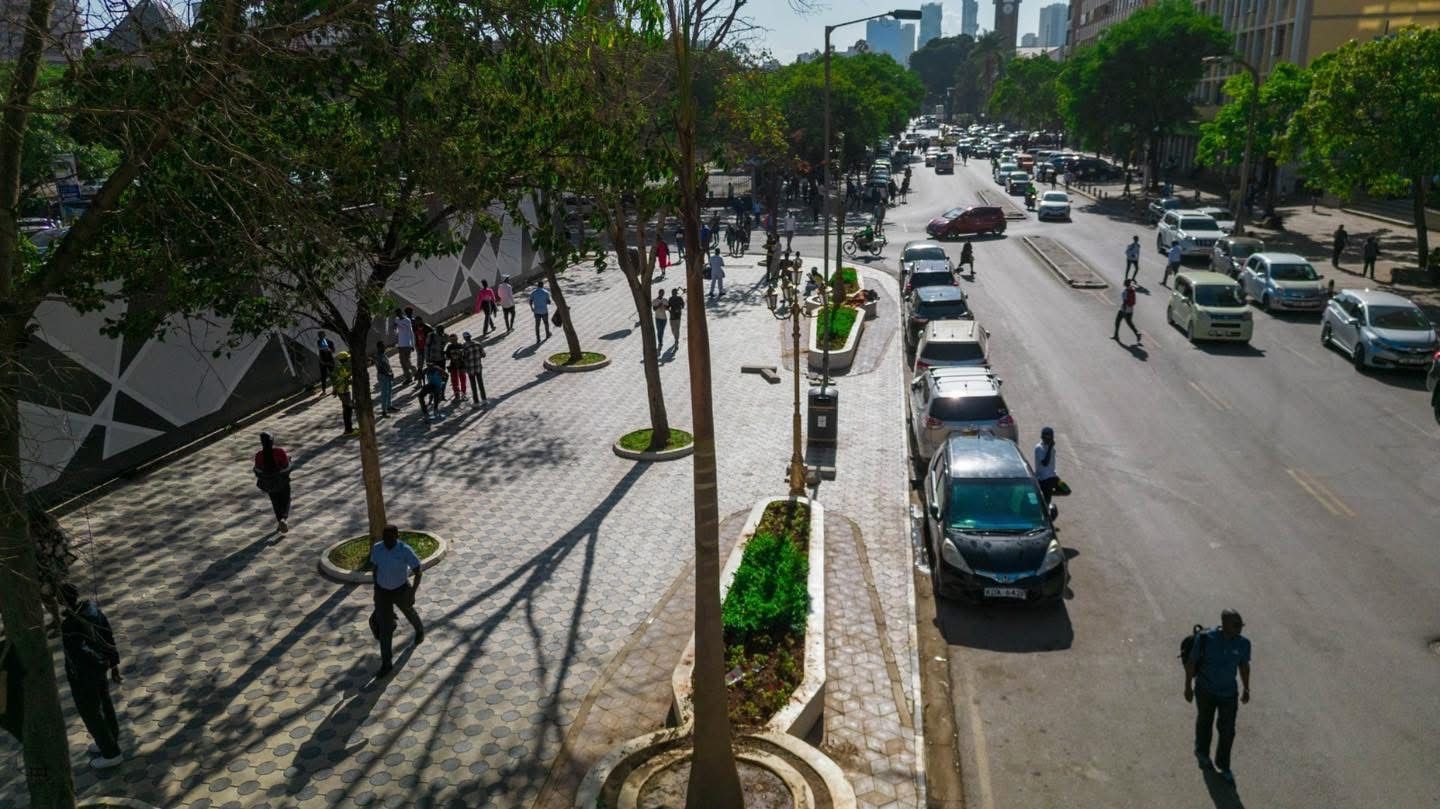
 Pedestrians jaywalk across a busy highway right below a footbridge built specifically for their own safety and that of other road users. /SCREENGRAB
Pedestrians jaywalk across a busy highway right below a footbridge built specifically for their own safety and that of other road users. /SCREENGRAB
The Kenya National Highways Authority has appealed to pedestrians to prioritise their safety and that of other road users by making it a habit to use footbridges to cross highways.
In a statement on X, the authority said that whereas jaywalking may appear convenient compared to taking several staircase flights on the footbridges, it has, on most occasions, come at a heavy cost.
“Maybe you are in a hurry or the bridge seemed too far. But here is the truth: that shortcut can become a lifespan cut short. Every day, pedestrians risk their lives by dashing across the highway. Some make it, some don’t.”
KeNHA emphasised strict adherence to provisions in Chapter 403 of the Traffic Act, which outlines rules for driving and other offences relating to motor vehicles on the road. Under the legislation, obstructing a driver of a motor vehicle by dashing across the road is an offence.
The law also prohibits driving on pavements and pedestrian walkways in order to avoid a buildup of traffic on a road.
“A person who contravenes commits an offence and shall be liable to imprisonment for a term not exceeding three months, or to a fine not exceeding Sh30,000. Second offenders shall, upon conviction, face up to six months’ jail term.”
The Traffic Act does not explicitly prohibit pedestrians from "dashing" across the road, but it does outline several provisions that relate to pedestrian safety and responsible road usage.
Section 47 addresses reckless or dangerous driving, which could apply to situations where a pedestrian's actions create a hazard.
“Any person who drives a motor vehicle on a road without due care and attention or without reasonable consideration for other persons using the road shall be guilty of an offence,” the law says.
The Act emphasises the importance of obeying traffic signals and signs, which implicitly discourages jaywalking.
Depending on the court’s discretion, this could cost you between Sh500 and Sh2,000 in instant fines.
“Where any person is charged with an offence under Section 47 and the court considers that the evidence is such as to justify a conviction under this section, the court may convict such person of an offence.”
 Pedestrians use a footbridge on a busy highway. /SCREENGRAB
Pedestrians use a footbridge on a busy highway. /SCREENGRABKeNHA said it’s not worth the risk for pedestrians to dash across the road, even as the law would largely lay the blame on the driver for reckless driving should they be knocked down.
The authority also discouraged the use of footbridges by roadside traders to sell their wares.
“Footbridges are meant for pedestrian safety. Blocking them causes pickpocketing, accidents, and even stampedes,” KeNHA warned.
It said many hospital admissions resulting from road accidents are due to pedestrians avoiding the use of footbridges—statistics that have remained constant for years, going by annual data released by the National Transport and Safety Authority (NTSA).
In 2024, Kenya experienced a significant increase in road traffic fatalities, with a reported 4,748 deaths.
Pedestrians were the most affected group, with a 15 per cent increase to 1,177 compared to 1,044 who lost their lives by the same date in 2023.
Between January and March this year, NTSA data showed that at least 1,139 people died as a result of road crashes, with pedestrians bearing the brunt at 420, followed closely by motorcyclists at 301 fatalities.
“These numbers don’t have to remain this way. With individual responsibility, we can turn these numbers around. Let’s choose safety over shortcuts – use the footbridge, save a life,” KeNHA said.













